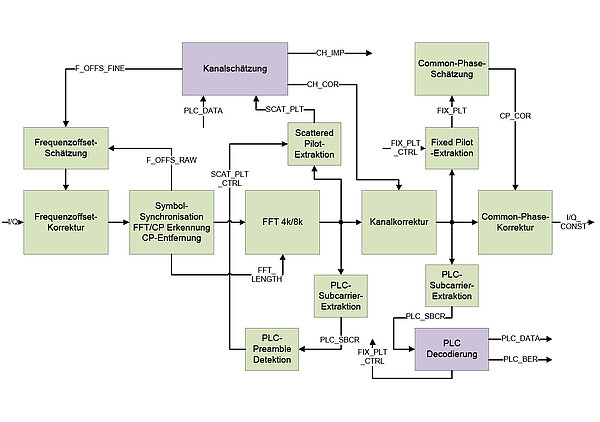DOCSIS 3.1 signal processing
Implementation of a DOCSIS 3.1 measurement receiver
Application: DOCSIS 3.1 receiver signal processing
Programming language: VHDL, C++
The Data Over Cable Service Interface Specification (DOCSIS) is used for data transmission in cable networks. In recent years, cable network operators have upgraded to the DOCSIS standard Version 3.0.
Version 3.1 of the DOCSIS standard was released in October 2013. DOCSIS 3.1 is designed to enable very high data rates of up to 10 Gbit/s downstream and 1 Gbit/s upstream. For this purpose, DOCSIS 3.1 uses fundamentally new transmission methods which are closely oriented to DVB-C2. Accordingly, the bandwidth is increased to up to 192 MHz and the modulation changes to the OFDM multi-carrier method with up to 4096 QAM constellation points per symbol.
For the “measurement receiver” application field, downstream DOCSIS 3.1 signal processing was implemented on a Virtex UltraScale platform.
The following functions were developed for the reception of DOCSIS 3.1 downstream signals:
- Symbol synchronisation (time synchronisation)
- Frequency synchronisation
- Common phase correction in the frequency range
- Channel estimation
- PLC-decoding and output of the PLC bit error rate
For the detailed signal analysis in the measurement receiver, the following interfaces were implemented:
- Constellation data (I/Q), addressable on a sub-carrier basis
- Channel impulse response
- PLC information
- PLC-BER
- Frequency offset
- Clock offset
InThe following block diagram shows the fundamental architecture of the DOCSIS 3.1 receiver:
Download
DOCSIS_RX_Concept.pdf
(PDF 12 KB)
